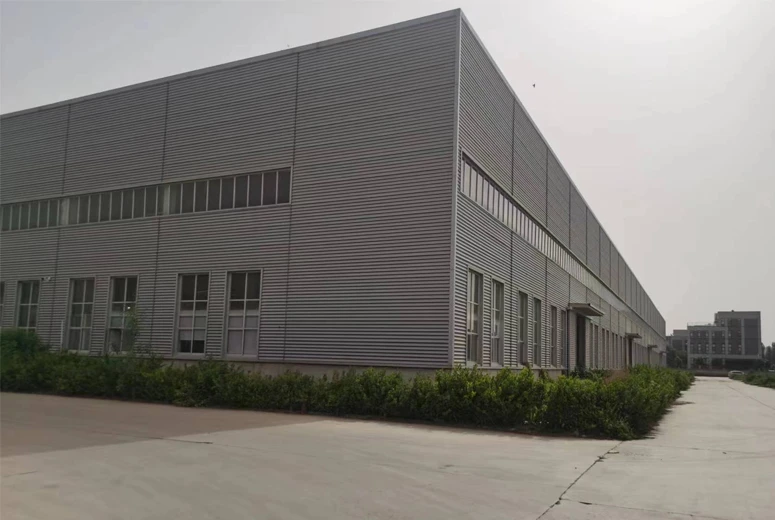steel coil uncoiler
The Importance of Steel Coil Uncoilers in Manufacturing
In the modern manufacturing landscape, the efficiency of production processes can significantly impact a company's bottom line. Among the essential machinery utilized in various industries, the steel coil uncoiler plays a pivotal role. This equipment is designed to unwind and feed steel coils into processing machines smoothly, ensuring continuous operation. As industries rely increasingly on automation and streamlined processes, understanding the importance and functionality of steel coil uncoilers is critical.
What is a Steel Coil Uncoiler?
A steel coil uncoiler is a device that unwinds coils of metal, particularly steel, to facilitate further processing. Steel comes in coils for several reasons to save space, to make transportation easier, and to allow for simpler handling during manufacturing. The uncoiler takes these heavy coils and feeds the flat sheets or strips of metal into machines like shears, presses, or rolling mills, where they can be shaped into various products.
Key Components of Steel Coil Uncoilers
Steel coil uncoilers come with several components that work together to ensure efficient operation. The primary parts include
1. Coil Holder This component holds the steel coil in place, providing stability during the uncoiling process. It can accommodate different coil sizes and weights, depending on the manufacturer’s specifications.
2. Payoff Arm This arm allows for smooth unwinding of the coil. It often has features that help control the tension, preventing the metal from twisting or kinking.
3. Drive Mechanism The drive mechanism can be powered mechanically or electronically, controlling the speed of the uncoiling process. Accurate speed regulation ensures that there is no excessive force exerted on the metal, which could cause damage.
4. Tension Control System This system maintains the necessary tension on the coil as it unwinds. Proper tension is crucial to avoid defects in the metal and to ensure that the feeding into subsequent processes is consistent.
steel coil uncoiler

5. Safety Features Given the heavy materials involved, uncoilers are equipped with safety features like emergency stops, guards, and systems to prevent overloading.
Benefits of Using Steel Coil Uncoilers
Utilizing a steel coil uncoiler in manufacturing offers numerous advantages
1. Increased Efficiency Uncoilers significantly reduce the time and labor required to handle steel coils manually. This can lead to higher productivity levels, as machines can operate continuously without interruptions.
2. Improved Precision The automation of the uncoiling process minimizes errors that can occur during manual handling. This precision is essential for industries where accuracy in metal dimensions is crucial.
3. Enhanced Safety Handling heavy steel coils poses safety risks in the workplace. Uncoilers reduce the need for manual lifting and handling, thereby decreasing the likelihood of workplace injuries.
4. Versatility Modern uncoilers are designed to work with various types of metals and coil sizes. This versatility allows manufacturers to adapt to changing production needs without significant investment in new equipment.
5. Cost-Effectiveness While the initial investment in an uncoiler may be substantial, the long-term savings through reduced labor costs, increased production speeds, and minimized material waste provide significant financial benefits.
Conclusion
As industries around the globe continue to embrace modernization and efficiency, the steel coil uncoiler has emerged as a vital component in the manufacturing process. By ensuring smooth and safe handling of steel coils, these machines contribute to the overall productivity and safety of production environments. Whether in automotive manufacturing, construction, or metal fabrication, investing in quality steel coil uncoilers can enhance operational efficiency and product quality. For manufacturers looking to streamline their production lines, the choice of a reliable and efficient uncoiler could make all the difference in achieving success in an increasingly competitive market.
-
High Frequency Straight Seam Welded Pipe Production Line-BzZhou Xinghua Machinery Equipment Manufacturing Co., LTD.|Precision Welding, High EfficiencyNewsJul.30,2025
-
High Frequency Straight Seam Welded Pipe Production Line|BzZhou Xinghua|Precision Welding&EfficiencyNewsJul.30,2025
-
High Frequency Straight Seam Welded Pipe Production Line - BzZhou Xinghua|Precision Engineering&EfficiencyNewsJul.30,2025
-
High-Frequency Straight Seam Welded Pipe Production Line-BzZhou Xinghua Machinery Equipment Manufacturing Co., LTD.NewsJul.30,2025
-
High-Frequency Straight Seam Welded Pipe Production Line-BzZhou Xinghua Machinery Equipment Manufacturing Co., LTD.|Precision Manufacturing, High EfficiencyNewsJul.30,2025
-
High Frequency Straight Seam Welded Pipe Production Line-BzZhou Xinghua Machinery Equipment Manufacturing Co., LTD.|Precision Steel Pipe Manufacturing&Industrial EfficiencyNewsJul.29,2025


